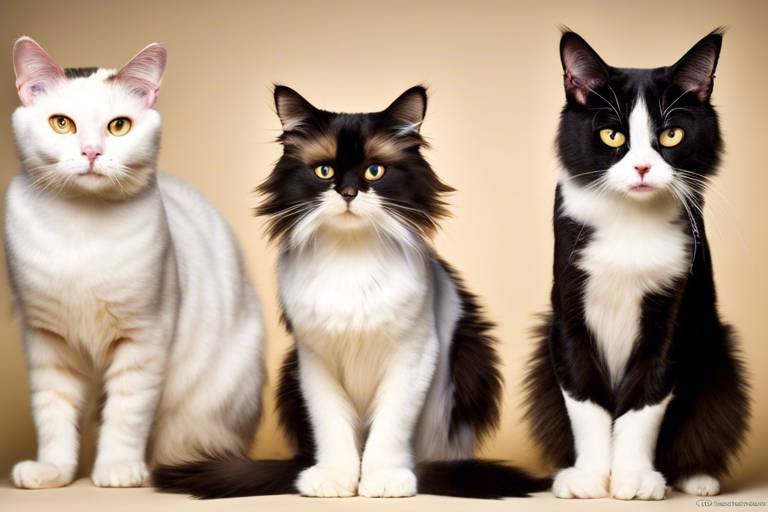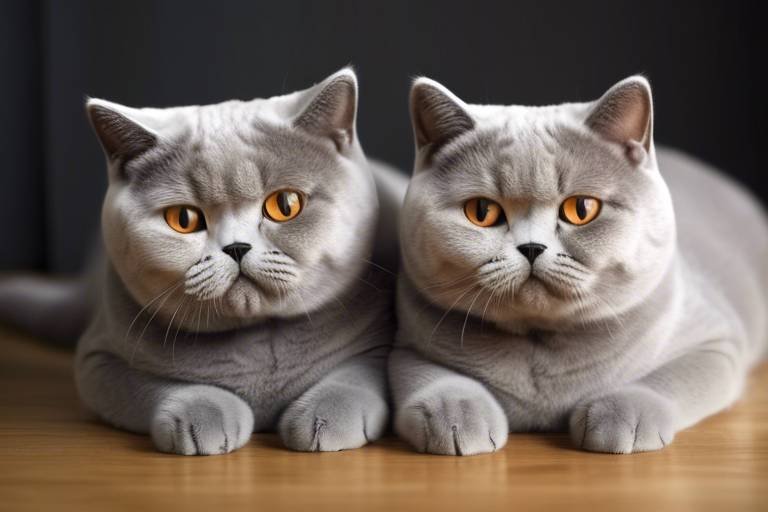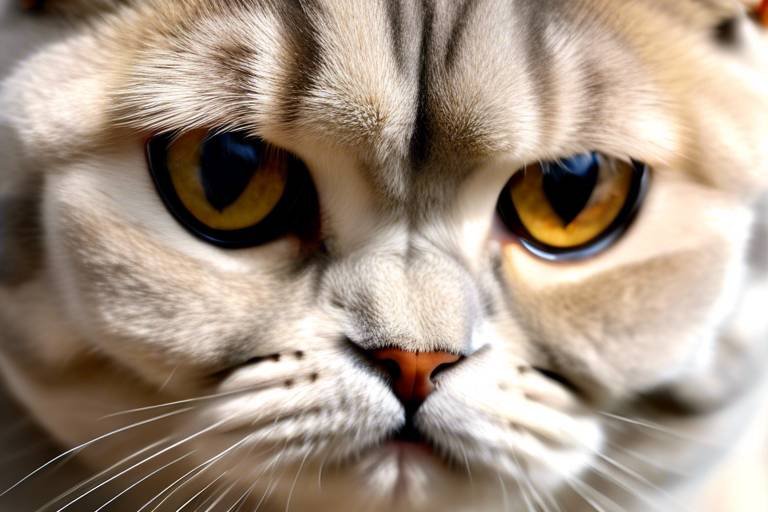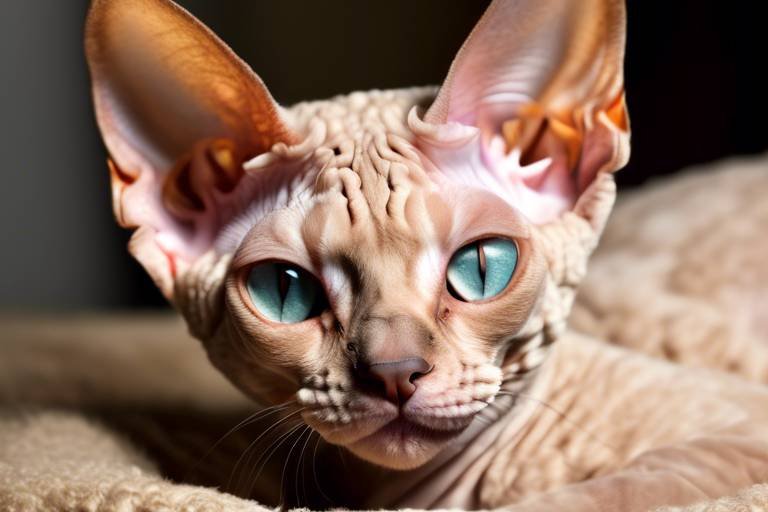Understanding the Unique Grooming Needs of Different Cat Breeds
When it comes to our feline friends, grooming is more than just a chore; it’s an essential part of their overall health and happiness. Each cat breed comes with its own unique set of grooming requirements, influenced by factors such as coat type, temperament, and even health considerations. Understanding these specific needs can be the key to keeping your kitty looking fabulous and feeling comfortable. Imagine navigating a maze of fur, skin, and whiskers; knowing the right path can make all the difference in ensuring your cat thrives. So, let’s dive into the fascinating world of cat grooming and discover how to pamper your pet in the best way possible!
The first step in understanding your cat's grooming needs is recognizing that different breeds possess a variety of coat types. These coat types not only determine how often your cat needs grooming but also influence the methods you'll use. For instance, some cats have sleek, short fur that requires minimal maintenance, while others boast luxurious long locks that can easily become tangled. By familiarizing yourself with your cat's coat type, you can establish a grooming routine that promotes a healthy, shiny coat and prevents issues like matting or skin irritations. Think of grooming as a bonding experience; it’s a way to connect with your cat while ensuring they feel their best!
Short-haired cats are often perceived as low-maintenance, and while it’s true they require less grooming than their long-haired cousins, they still benefit from regular attention. These cats may not need daily brushing, but a weekly session can significantly reduce shedding and keep their skin healthy. Regular grooming can also help you bond with your cat, turning what might seem like a mundane task into a delightful ritual. It’s like a mini spa day for your furry friend!
Among the most popular short-haired breeds are the American Shorthair and the British Shorthair. These cats have dense, plush coats that can benefit from occasional brushing. While they might not require extensive grooming, a little attention goes a long way in managing shedding and maintaining that glossy coat. Think of it as giving them a little extra love and care, ensuring they strut around looking their best!
Choosing the right grooming tools can make all the difference in the world. For short-haired cats, rubber brushes or grooming gloves are fantastic options. These tools not only effectively remove loose fur and dirt, but they also provide a gentle massage that your cat will love. It’s like giving them a little pampering session while keeping their coat in tip-top shape!
One common mistake many cat owners make is underestimating the grooming needs of short-haired breeds. Just because they have shorter fur doesn’t mean they don’t need care! Neglecting their grooming can lead to skin issues or excessive shedding. To avoid these pitfalls, it’s crucial to understand the proper techniques and make grooming a regular part of your cat care routine. Remember, a little effort goes a long way in keeping your cat healthy and happy!
On the flip side, long-haired cats like Persians and Maine Coons require more frequent grooming. Their beautiful, flowing coats can easily become tangled or matted if not attended to regularly. Think of their grooming routine as a necessary investment in their comfort and overall coat health. A well-groomed long-haired cat not only looks stunning but also feels much more comfortable in their own skin!
Grooming needs can also change with the seasons. Just as we adjust our wardrobes, our cats may need different grooming routines depending on the time of year. Understanding these seasonal changes can help keep your cat comfortable and looking great all year round. It’s all about adapting to their needs, much like how we change our skincare routines with the weather!
During the warmer months, many cats tend to shed more, making regular brushing essential. This not only helps manage loose fur but also keeps your cat cooler by removing excess hair. Think of it as a summer refresh for your furry companion; a little grooming can go a long way in keeping them comfortable in the heat!
As temperatures drop, cats often grow thicker coats, which can lead to matting if not properly groomed. Adjusting your grooming techniques to accommodate this change is vital for your cat's comfort. It’s like bundling up in a cozy sweater; you want to ensure they stay warm without getting tangled up in their own fur!
Grooming is not just about aesthetics; it plays a crucial role in your cat's overall health. Regular grooming sessions can help identify potential health issues early on, such as skin problems or parasites. Think of it as a health check-up that you can do right at home. The more you groom, the more you’ll learn about your cat’s body and any changes that might need veterinary attention.
Through regular grooming, you can spot signs of skin issues, such as redness or irritation. This early detection can lead to timely veterinary intervention, ensuring your cat receives the care they need before problems escalate. It’s like being a detective for your cat’s health; the more you observe, the better you can protect them!
Some cats may have allergies or sensitivities that affect their grooming needs. Understanding these conditions can help you choose suitable grooming products and techniques. If you notice your cat reacting negatively to certain brushes or shampoos, it’s essential to switch to hypoallergenic options. Your cat’s comfort should always come first, and being proactive about their grooming can make all the difference!
- How often should I groom my cat? It depends on the breed. Short-haired cats may need grooming once a week, while long-haired breeds might require daily attention.
- What tools do I need for grooming? Rubber brushes and grooming gloves are great for short-haired cats, while long-haired cats may benefit from combs and slicker brushes.
- Can grooming help with shedding? Yes! Regular grooming helps remove loose fur and reduces shedding around your home.
- What if my cat doesn’t like being groomed? Start slowly and make it a positive experience with treats and gentle handling to help them get used to the process.
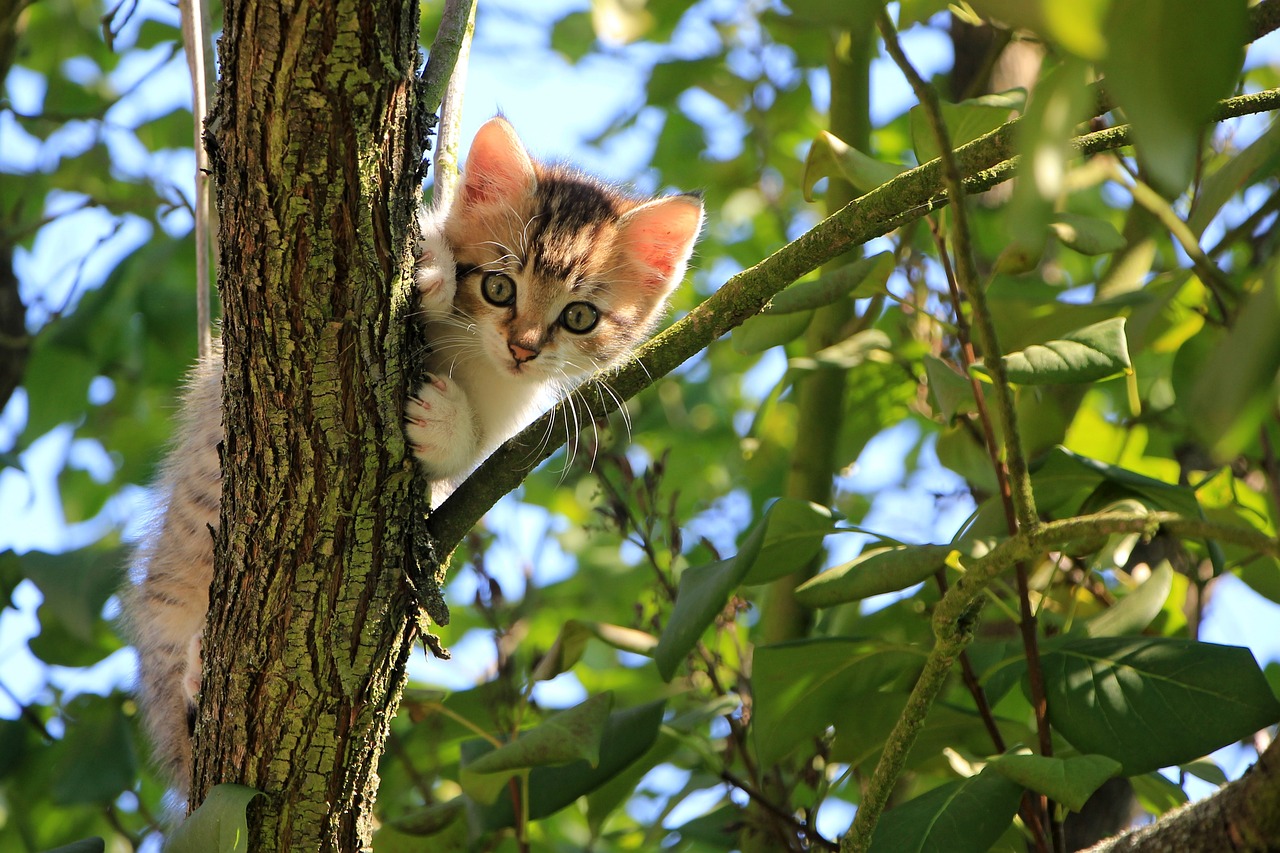
Coat Types and Grooming Frequency
When it comes to our feline friends, one size definitely does not fit all—especially when it comes to grooming. The coat type of a cat plays a crucial role in determining how often and how thoroughly they need to be groomed. Just think about it: a fluffy Maine Coon with its long, luxurious fur has vastly different needs than a sleek, short-haired Siamese. Understanding these differences is key to keeping your kitty happy and healthy.
Different breeds come with their unique coat characteristics, which can range from short and smooth to long and fluffy. These characteristics not only influence the frequency of grooming but also the tools and techniques you'll need to use. For example, short-haired cats may only require a good brush once a week, while long-haired breeds might need daily attention to prevent matting and tangling.
To give you a clearer picture, here's a quick overview of how coat types relate to grooming frequency:
| Coat Type | Grooming Frequency | Common Breeds |
|---|---|---|
| Short-Haired | Once a week | American Shorthair, British Shorthair |
| Medium-Haired | Every 2-3 days | American Curl, Norwegian Forest Cat |
| Long-Haired | Daily | Persian, Maine Coon |
As you can see, the grooming needs vary significantly based on the coat type. But it’s not just about how much fur is there—it's also about the texture and density of the coat. Cats with denser coats may need more frequent grooming to prevent skin issues and to keep their fur looking shiny and healthy. Additionally, some breeds are prone to specific health conditions that can be exacerbated by poor grooming habits, making regular maintenance even more essential.
In summary, understanding your cat's coat type is vital for establishing an effective grooming routine. It’s not merely a chore; it’s an opportunity to bond with your cat while ensuring they stay comfortable and healthy. So, whether your cat has a sleek coat that needs minimal maintenance or a fluffy mane that requires daily attention, paying attention to these grooming needs is a labor of love that will pay off in spades.
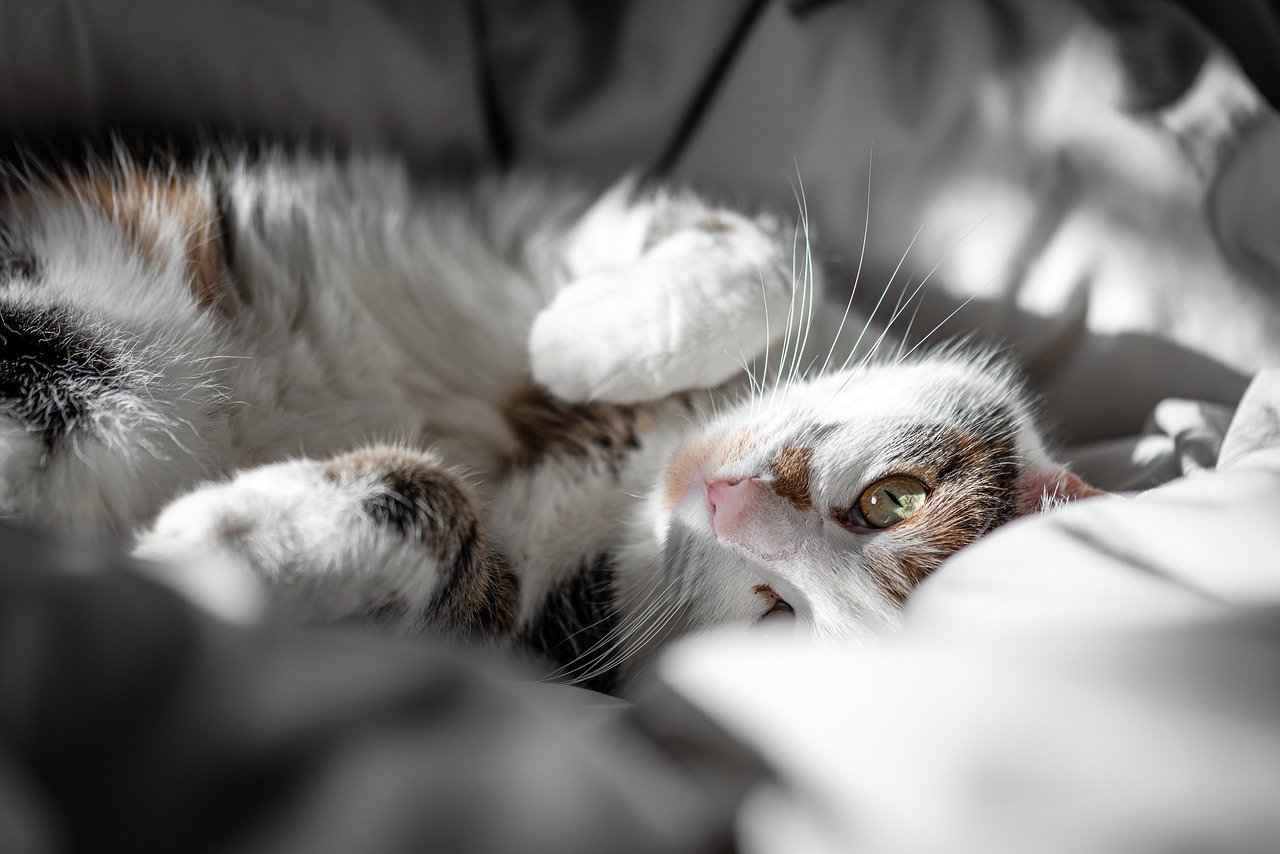
Short-Haired Breeds
When it comes to grooming, short-haired cats often get a bad rap. Many owners mistakenly believe that these felines are virtually maintenance-free, but that couldn't be further from the truth. While it’s true that short-haired breeds generally require less grooming than their long-haired counterparts, they still have unique grooming needs that should not be overlooked. Regular grooming not only keeps their coats looking sleek and shiny but also plays a significant role in their overall health and well-being.
Take the American Shorthair, for instance. This breed is renowned for its muscular build and round face, but its coat is just as impressive. With a dense, short coat, this breed does shed—sometimes more than you might expect! A quick brushing session once a week can help manage that shedding, ensuring that your furniture remains fur-free and your cat's skin stays healthy. Similarly, the British Shorthair, with its plush, thick coat, benefits from consistent grooming to remove loose hairs and prevent any skin irritations that might arise from trapped dirt or oils.
To effectively groom your short-haired feline, having the right tools is essential. Rubber brushes and grooming gloves are popular choices among cat owners because they not only remove loose fur but also give your cat a nice massage, making grooming a pleasant experience for both of you. Additionally, a fine-toothed comb can help you reach those tricky areas, like behind the ears or under the chin, where dirt and loose hair tend to accumulate. The goal here is to create a routine that your cat associates with positive experiences, reducing any resistance during grooming sessions.
As with any aspect of pet care, there are common pitfalls to avoid when grooming short-haired cats. One major mistake is underestimating their grooming needs. Many owners think that because their cat has a short coat, they don’t need regular grooming. However, this can lead to issues such as excessive shedding, skin irritation, or even infections. Another mistake is using the wrong tools; for instance, using a brush designed for long-haired breeds can be ineffective and uncomfortable for your short-haired cat. To prevent these issues, it's crucial to educate yourself on the specific grooming needs of your breed and to establish a routine that works for both you and your feline friend.
In conclusion, while short-haired breeds may not require as much grooming as their long-haired relatives, they still have unique needs that should be addressed. By understanding these requirements and using the right tools, you can ensure your cat stays healthy, comfortable, and looking fabulous all year round.
- How often should I groom my short-haired cat? It’s recommended to groom them at least once a week to manage shedding and keep their coat healthy.
- What tools are best for grooming short-haired cats? Rubber brushes, grooming gloves, and fine-toothed combs work best for short-haired breeds.
- Can I use human shampoo on my cat? No, it’s important to use products specifically designed for cats, as human shampoos can irritate their skin.
- What signs indicate my cat needs more grooming? If you notice excessive shedding, skin irritation, or mats forming, it’s time to increase grooming sessions.
Popular Short-Haired Breeds
When it comes to short-haired cats, there’s a delightful variety that captivates cat lovers around the world. Breeds like the American Shorthair and British Shorthair stand out not only for their charming personalities but also for their unique grooming needs. These cats may not require the extensive grooming routines that long-haired breeds do, but that doesn’t mean their grooming can be overlooked. In fact, understanding their specific needs can greatly enhance their overall health and appearance.
The American Shorthair is known for its robust physique and playful nature. With a coat that is dense yet short, this breed benefits from regular brushing to keep its fur shiny and to minimize shedding. Surprisingly, many owners might think that less hair means less maintenance, but this breed can still produce a fair amount of loose fur, especially during seasonal changes. A quick session with a rubber brush or grooming glove can not only keep their coat looking fabulous but also provide a bonding experience between the owner and their feline friend.
On the other hand, the British Shorthair is famous for its plush, teddy bear-like appearance. Their thick, dense coat requires a bit more attention than one might expect. While they are generally low-maintenance, a weekly brushing can help prevent matting and ensure that their coat remains healthy and vibrant. It’s fascinating how a simple grooming routine can enhance their natural beauty, making them look even more adorable!
To give you a better understanding of the grooming needs of these popular short-haired breeds, here’s a quick comparison:
| Breed | Coat Type | Recommended Grooming Frequency |
|---|---|---|
| American Shorthair | Dense, short | Weekly |
| British Shorthair | Thick, plush | Weekly |
In addition to these breeds, other short-haired cats like the Siamese and Burmeses also have their own grooming quirks. Their sleek coats require minimal maintenance, yet they still benefit from occasional brushing to remove dirt and dead hair. It’s amazing how such simple grooming practices can lead to a happier and healthier cat. So, the next time you sit down for a grooming session, remember that you’re not just keeping your cat looking good; you’re also contributing to their overall well-being!
Ultimately, whether you’re the proud owner of an American Shorthair, a British Shorthair, or any other short-haired breed, understanding their grooming needs is essential. Regular grooming helps to maintain their coat's health and can even prevent potential skin problems down the road. So, grab those brushes and enjoy the special moments spent pampering your furry companion!
- How often should I groom my short-haired cat?
Most short-haired breeds benefit from grooming at least once a week to manage shedding and keep their coat healthy. - What tools are best for grooming short-haired cats?
Rubber brushes and grooming gloves work well to remove loose fur and dirt without irritating the skin. - Can I groom my cat if they don’t like it?
Start slowly and make grooming a positive experience with treats and gentle strokes to help them get used to it.
Grooming Tools for Short-Haired Cats
When it comes to grooming short-haired cats, choosing the right tools can make all the difference. While these felines may not require as much maintenance as their long-haired counterparts, they still benefit from regular grooming sessions that keep their coats healthy and shiny. One of the best tools to start with is a rubber brush. These brushes are not only effective at removing loose fur but also gentle on the skin, making them a favorite among many cat owners. The rubber bristles massage the skin, stimulating natural oils that promote a lustrous coat.
Another excellent option is grooming gloves. These gloves allow you to bond with your cat while grooming, as they provide a comforting touch that many cats enjoy. Simply pet your cat with these gloves, and you'll find that they effectively collect loose hair and dander, making cleanup a breeze. Plus, they can be a fun way to engage with your pet during grooming time.
For those who prefer a more traditional approach, a fine-toothed comb can be an invaluable tool. This type of comb helps to remove any remaining loose fur and can also aid in detecting skin issues or parasites. It's essential to be gentle and patient when using a comb, as some cats might be sensitive to pulling or tugging.
In addition to these grooming tools, consider investing in a de-shedding tool. These specialized tools are designed to reach through the topcoat and remove undercoat fur, significantly reducing shedding around your home. Using a de-shedding tool can be particularly beneficial during shedding seasons, ensuring that your cat remains comfortable and your home stays fur-free.
Finally, don't forget about the importance of grooming routines. Establishing a regular grooming schedule not only keeps your cat looking its best but also strengthens the bond between you and your feline friend. Aim for at least once a week, and adjust based on your cat's shedding patterns and personal preferences. Remember, grooming should be a positive experience for both you and your cat, so take your time, and always reward your furry companion with treats or affection after each session.
- How often should I groom my short-haired cat? Generally, once a week is sufficient for short-haired breeds, but adjust based on your cat's shedding and comfort level.
- What if my cat doesn't like being groomed? Start slowly and make the experience positive with treats and gentle strokes. Gradually increase grooming time as your cat becomes more comfortable.
- Can I use human grooming tools on my cat? It's best to use tools specifically designed for cats, as human tools may not be suitable for their unique coat and skin needs.
- Are there any specific products I should avoid? Avoid products with harsh chemicals or fragrances, as these can irritate your cat's skin. Opt for pet-safe grooming products instead.
Common Grooming Mistakes
This article explores the specific grooming requirements of various cat breeds, highlighting how their coat types, temperaments, and health considerations affect their grooming routines and overall well-being.
Different cat breeds possess varying coat types, which directly influence how often they need grooming. Understanding these differences can help cat owners maintain healthy coats and prevent matting or skin issues.
Short-haired cats typically require less grooming than their long-haired counterparts. However, regular brushing can still help reduce shedding and keep their skin healthy, ensuring they look their best all year round.
Breeds like the American Shorthair and British Shorthair have distinct grooming needs. Their dense coats may require occasional brushing to manage shedding and maintain a shiny appearance.
Using the right tools, such as rubber brushes or grooming gloves, can make the grooming process enjoyable for short-haired cats while effectively removing loose fur and dirt.
When it comes to grooming short-haired cats, many owners tend to underestimate their grooming needs, leading to various common mistakes that can affect their feline friends' health and appearance. One of the biggest blunders is neglecting regular brushing. While short-haired cats may not require daily grooming, occasional brushing is essential to manage shedding and maintain a healthy coat. Skipping this step can result in excessive shedding around the house and potential skin irritations for your cat.
Another frequent mistake is using the wrong grooming tools. For instance, some owners might think that a regular brush will suffice for their short-haired cats. However, using a rubber brush or grooming glove can be much more effective in removing loose fur and dirt while providing a gentle massage for your pet. This not only helps with shedding but also strengthens the bond between you and your cat.
Moreover, many cat owners overlook the importance of checking for skin issues during grooming sessions. Regularly running your hands through your cat’s coat can help you spot signs of irritation, redness, or even parasites. By being proactive in this way, you can ensure that any potential health issues are addressed promptly.
Lastly, it’s crucial to avoid forcing your cat into grooming sessions. Cats are sensitive creatures, and if they associate grooming with stress or discomfort, they may resist future grooming efforts. Instead, make it a positive experience by rewarding your cat with treats and praise, ensuring they feel safe and comfortable during the process.
Long-haired cats, such as Persians and Maine Coons, require more frequent grooming to prevent mats and tangles. Regular grooming is essential for their comfort and coat health.
Cats may have different grooming needs depending on the season. Understanding how to adjust grooming routines can help keep your cat comfortable throughout the year.
During warmer months, cats may shed more, necessitating regular brushing to manage loose fur and maintain a cool coat.
As temperatures drop, cats may grow thicker coats, requiring different grooming techniques to prevent matting while keeping them warm and comfortable.
Grooming is not just about aesthetics; it plays a vital role in a cat's overall health. Regular grooming helps identify skin issues, parasites, and other health concerns early on.
Through regular grooming, owners can spot signs of skin problems, such as redness or irritation, allowing for timely veterinary intervention and care.
Some cats may have allergies or sensitivities that affect their grooming needs. Understanding these conditions can help owners choose suitable grooming products and techniques.
- How often should I groom my short-haired cat? Regular brushing once a week is usually sufficient to manage shedding and keep their coat healthy.
- What tools are best for grooming my long-haired cat? A wide-toothed comb and a slicker brush are ideal for detangling and preventing mats.
- Can grooming help with my cat’s allergies? Yes, regular grooming can help remove allergens from the coat and skin, reducing allergy symptoms.
- What should I do if I find skin issues during grooming? Consult your veterinarian for advice on treatment options and care.
Long-Haired Breeds
When it comes to grooming, long-haired cat breeds like Persians and Maine Coons present a unique set of challenges and delights. Their luxurious coats, while stunning, require a level of dedication that short-haired breeds simply do not. Imagine trying to maintain a beautiful, flowing mane; it takes time, effort, and the right tools! These cats are not just pets; they are a commitment to beauty and care.
First off, the frequency of grooming for long-haired breeds is significantly higher. Ideally, they should be brushed at least three to five times a week, if not daily. This regular grooming helps prevent mats and tangles, which can be uncomfortable for your feline friend. Think of it as a daily spa session for your cat—an opportunity for bonding and relaxation. The act of grooming can also help to distribute natural oils throughout their coat, keeping it healthy and shiny.
One of the main reasons long-haired cats need more grooming is their propensity to develop mats. These can occur in areas where fur rubs against itself, like behind the ears or under the arms. If left unchecked, mats can become painful and lead to skin issues. Regular brushing not only keeps their coat looking fabulous but also allows you to check for any skin irritations or parasites that could be lurking beneath the surface. It's a win-win situation!
Now, let’s talk tools. The right grooming tools can make all the difference in the world. Here’s a quick table summarizing some of the best grooming tools for long-haired cats:
| Grooming Tool | Purpose |
|---|---|
| Wide-Toothed Comb | Untangles knots and prevents breakage |
| Slicker Brush | Removes loose fur and prevents mats |
| De-shedding Tool | Reduces shedding, especially during seasonal changes |
| Grooming Glove | Gentle brushing that cats enjoy |
Using these tools correctly is essential. For example, always start with a wide-toothed comb to gently detangle any knots before moving on to a slicker brush for a deeper clean. And remember, patience is key! Long-haired cats often enjoy the attention, but they can also get a bit fidgety. Make sure to keep the sessions short and positive, rewarding them with treats or affection.
In addition to the grooming routine, it’s important to consider the temperament of your long-haired feline. Some breeds, like the Ragdoll, are known for their laid-back personalities, making them more receptive to grooming. Others, such as the Persian, may have a more sensitive disposition. Understanding your cat’s temperament will help you tailor your grooming approach, ensuring it’s a pleasant experience for both of you.
In conclusion, grooming long-haired breeds is not just a chore; it's an essential part of their care that fosters health and happiness. By investing time in grooming, you’re not only keeping their coat beautiful but also nurturing your bond with your furry companion. So grab those brushes, put on some soothing music, and enjoy the grooming ritual—it’s a chance for both of you to unwind and connect!
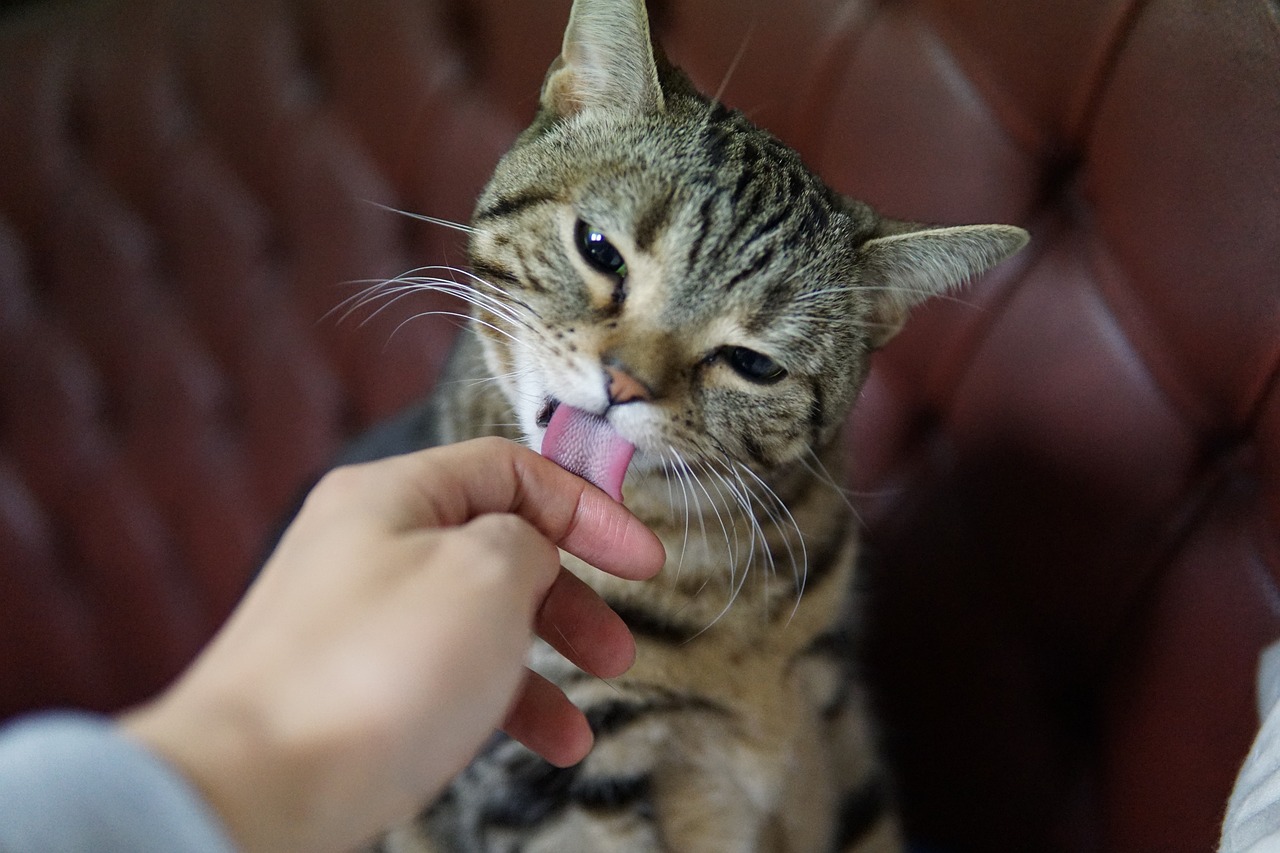
Seasonal Grooming Considerations
When it comes to grooming your beloved feline friend, understanding the impact of the seasons is crucial. Just like we change our wardrobes with the weather, our cats' grooming needs evolve throughout the year. Each season brings its own set of challenges and opportunities for maintaining your cat’s coat and overall health. In spring and summer, for instance, you might notice your cat shedding more than usual. This is their natural response to the warmer temperatures, as they begin to shed their winter coat to stay cool. Regular brushing during these months is essential; it not only helps manage the excess fur but also prevents hairballs and keeps your home fur-free. Think of it as a spa day for your kitty, where they can enjoy the sensation of being pampered while you tackle that pesky shedding!
On the flip side, fall and winter present their own unique grooming challenges. As the temperatures drop, cats often grow thicker coats to keep warm. This is particularly true for long-haired breeds, which can be prone to matting if not groomed regularly. During these colder months, you'll want to adjust your grooming routine to include more frequent brushing sessions. This helps to prevent tangles and mats that can form in their fur, especially in areas where they might rub against furniture or other surfaces. It's also a great time to check for any skin irritations that could be hidden beneath their lush winter coat. Remember, grooming isn’t just about aesthetics; it’s about ensuring your cat is comfortable and healthy throughout the year.
To make the most of your seasonal grooming routine, consider the following tips:
- Spring/Summer: Increase brushing frequency to manage shedding and keep your cat cool.
- Fall/Winter: Focus on preventing mats and tangles by brushing more often.
- Temperature Awareness: Be mindful of how temperature changes can affect your cat’s coat and skin.
By keeping a close eye on the seasonal changes and adjusting your grooming techniques accordingly, you can ensure that your cat remains comfortable and healthy all year round. After all, a well-groomed cat is a happy cat!
Q: How often should I groom my cat in the spring and summer?
A: In the warmer months, it's advisable to brush your cat at least 2-3 times a week to manage shedding and keep their coat healthy.
Q: What should I do if I notice mats forming in my cat's fur?
A: If you find mats, try to gently work them out with your fingers or a wide-toothed comb. If they are too tight, consider taking your cat to a professional groomer.
Q: Are there specific grooming tools I should use for different seasons?
A: Yes, during shedding season, tools like rubber brushes or shedding blades work well. In winter, a slicker brush can help manage tangles and mats.
Grooming in Spring and Summer
As the temperatures rise and the days grow longer, it’s essential to adapt your cat’s grooming routine to suit the warmer months. During spring and summer, many cats experience an increase in shedding as they transition from their winter coats to lighter, more breathable fur. This natural process can lead to a significant amount of loose hair around your home, not to mention the potential for hairballs and skin irritations if not managed properly. Regular grooming becomes not just a luxury, but a necessity to keep your feline friend comfortable and healthy.
One of the key aspects of grooming during these seasons is brushing frequency. While short-haired breeds might seem to require less attention, they still benefit from regular brushing sessions. For long-haired breeds, such as Persians or Maine Coons, daily grooming is often advisable to prevent mats and tangles from forming. The right tools can make this process enjoyable for both you and your cat. Consider using a slicker brush or a de-shedding tool to effectively remove loose fur and keep their coat shiny and healthy.
In addition to brushing, it’s also vital to monitor your cat’s skin for any signs of irritation or discomfort. The heat can exacerbate issues such as allergies or hot spots, which may require special attention. If you notice any redness, swelling, or excessive scratching, it’s a good idea to consult your veterinarian for advice. Furthermore, as you groom your cat, take the opportunity to check for parasites, like fleas and ticks, which tend to be more prevalent in warmer weather.
Another consideration during spring and summer is the importance of keeping your cat cool. Grooming can help with this by removing excess fur that may trap heat. Additionally, providing plenty of fresh water and shaded areas for your cat to relax can ensure they stay comfortable. Remember, a well-groomed cat isn’t just a pretty sight; it’s a happy and healthy one!
Finally, don’t forget to reward your cat for their cooperation during grooming sessions. A little treat or extra playtime can turn grooming into a positive experience, making it easier for both of you. By paying attention to your cat’s grooming needs during the warmer months, you can help them enjoy a comfortable and healthy spring and summer.
- How often should I groom my cat in spring and summer?
In general, short-haired cats should be groomed at least once a week, while long-haired breeds may require daily grooming to prevent mats and tangles. - What tools are best for grooming my cat during warmer months?
Using a slicker brush or a de-shedding tool can be very effective for removing loose fur and keeping your cat's coat healthy. - How can I tell if my cat has skin issues related to grooming?
Look for signs such as redness, irritation, or excessive scratching. If you notice these symptoms, consult your veterinarian for advice. - Should I change my cat's diet during spring and summer?
While grooming is essential, ensuring your cat has a balanced diet with plenty of hydration is crucial in warmer months, as it supports their overall health and coat condition.
Grooming in Fall and Winter
As the leaves change and the temperatures drop, our feline friends undergo some fascinating transformations. During the fall and winter months, many cats develop thicker, fluffier coats to keep warm. This is a natural adaptation, but it also means that their grooming needs shift significantly. Regular grooming becomes even more crucial during these seasons to prevent matting and to keep their skin healthy and comfortable.
In colder months, cats can be more prone to developing mats in their fur. These mats can trap moisture and heat against the skin, leading to skin irritations or infections. Therefore, it's essential to incorporate more frequent grooming sessions into your routine. Aim for at least two to three times a week, depending on your cat's coat type. For example, long-haired breeds like the Persian or Maine Coon may require daily grooming to prevent tangles and keep their coats looking luxurious.
One effective way to manage the increased grooming needs is to create a cozy grooming environment. Use a soft blanket or a favorite spot where your cat feels comfortable. This will help them relax during the grooming process. Additionally, consider using a combination of grooming tools, such as wide-toothed combs for detangling and slicker brushes for removing loose fur. The right tools can make the experience enjoyable for both you and your cat.
Another important aspect to consider is that indoor heating can dry out your cat's skin, leading to flakiness and irritation. To combat this, ensure that you’re using a moisturizing conditioner during grooming sessions. This not only helps maintain a healthy coat but also keeps your cat's skin hydrated. If you notice any signs of dryness or irritation, consult your veterinarian for appropriate products.
Lastly, remember that grooming is not just about looks; it’s a bonding experience. Take your time, be gentle, and talk to your cat during the grooming sessions. They may not understand every word, but your soothing voice can help them feel more at ease. By paying attention to their grooming needs in fall and winter, you can ensure that your cat stays comfortable, healthy, and looking fabulous throughout the chilly months.
- How often should I groom my long-haired cat in winter? It is recommended to groom long-haired cats daily to prevent mats and tangles.
- Can I use human grooming products on my cat? No, always use pet-specific grooming products as human products can irritate their skin.
- What tools are best for grooming during colder months? A slicker brush and wide-toothed comb are ideal for managing thicker winter coats.
- How can I tell if my cat's skin is dry? Look for flakiness or irritation; if in doubt, consult your vet.
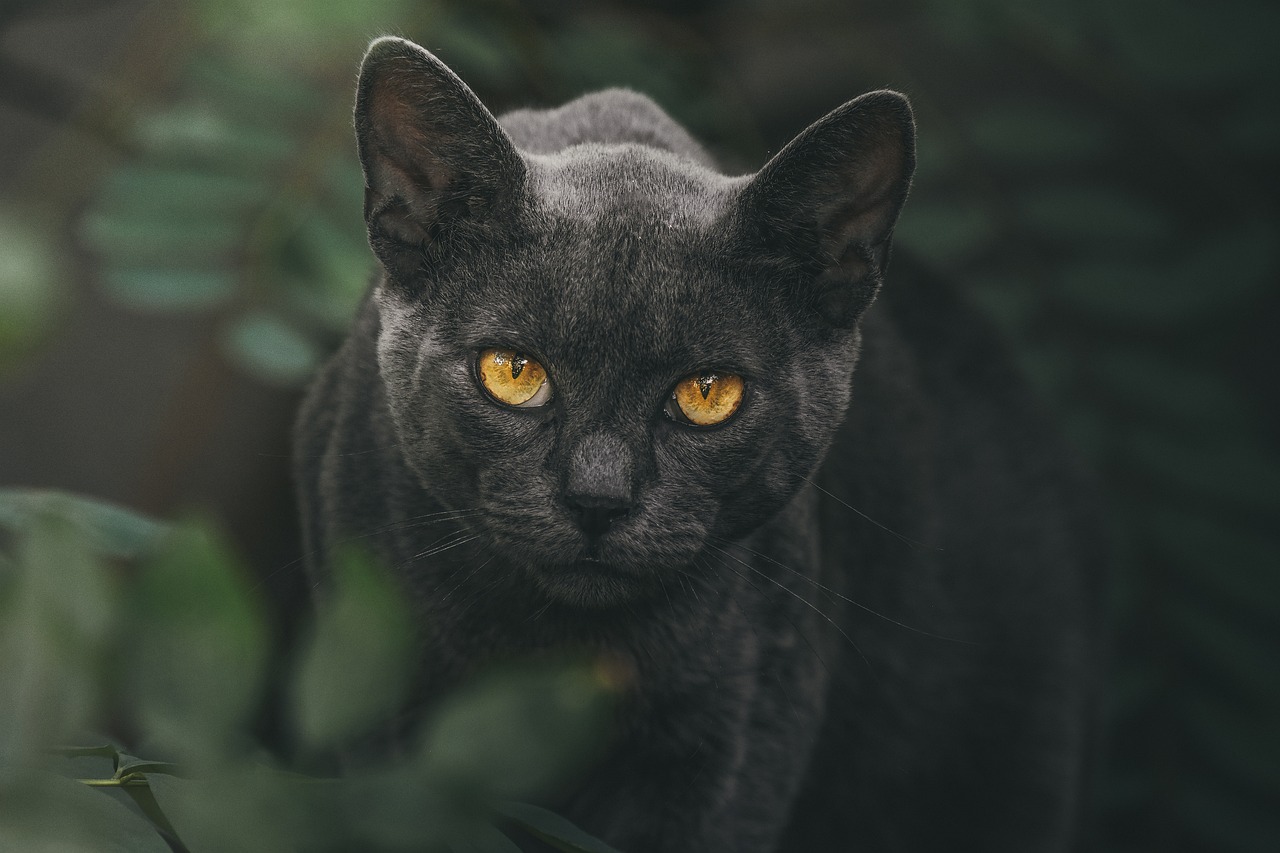
Health Considerations in Grooming
When it comes to grooming our feline friends, it's important to remember that it's not just about keeping them looking fabulous. Regular grooming plays a crucial role in maintaining your cat's overall health and well-being. By incorporating grooming into your cat care routine, you can help identify potential health issues before they become serious problems. Just like we feel better when we take care of our appearance, our cats also thrive when they receive proper grooming.
One of the primary benefits of grooming is the ability to spot skin issues early on. For instance, while brushing your cat, you may notice redness, irritation, or unusual bumps on their skin. These signs could indicate allergies, infections, or even parasites like fleas and ticks. By catching these issues early, you can seek veterinary care promptly, ensuring your furry companion stays happy and healthy.
Moreover, grooming sessions are an excellent opportunity to check for other health concerns. For example, you can examine your cat's ears for dirt or wax buildup, which could lead to infections if left unchecked. Additionally, checking their paws for any signs of injury or irritation is essential, as cats often hide discomfort. Regular grooming allows you to be proactive rather than reactive when it comes to your cat's health.
Another critical aspect to consider is that some cats may have allergies or sensitivities that affect their grooming needs. For instance, certain grooming products may irritate their skin or respiratory system. It's essential to choose hypoallergenic grooming tools and shampoos to avoid causing any discomfort. Always opt for products that are specifically designed for cats, as human products can be harmful to their delicate skin and fur.
To better understand the health benefits of grooming, let's take a look at a few key points:
- Early Detection: Regular grooming helps identify skin issues, parasites, and other health concerns.
- Bonding Time: Grooming can strengthen the bond between you and your cat, reducing stress and anxiety.
- Stress Relief: Many cats find grooming soothing, which can help reduce anxiety and promote relaxation.
In summary, grooming is an essential part of cat care that goes beyond aesthetics. It allows you to monitor your cat's health, identify potential issues early, and ensure they remain comfortable and happy. By incorporating regular grooming into your routine, you not only keep your cat looking great but also contribute significantly to their overall well-being.
Q: How often should I groom my cat?
A: The frequency of grooming depends on your cat's breed and coat type. Short-haired cats may require grooming once a week, while long-haired breeds may need daily brushing.
Q: What tools do I need for grooming?
A: Essential grooming tools include brushes, combs, nail clippers, and grooming wipes. The specific tools you need will depend on your cat's coat type.
Q: Can grooming help with shedding?
A: Yes! Regular grooming helps remove loose fur, reducing shedding and preventing hairballs.
Q: How can I make grooming enjoyable for my cat?
A: Start slowly, use treats, and create a calm environment. Make grooming a positive experience by rewarding your cat with praise and treats.
Identifying Skin Issues
Regular grooming is crucial for maintaining your cat's health, and one of the most important aspects of grooming is the ability to identify skin issues. Cats can’t tell us when something is wrong, so it’s up to us as their caregivers to be vigilant. While brushing your feline friend, take a moment to observe their skin closely. Look for any signs of redness, irritation, or unusual bumps. These could indicate underlying problems that require attention.
Common skin issues in cats include allergies, parasites, and infections. Allergies can manifest as itchy patches or excessive grooming, leading to hair loss and skin irritation. Parasites, such as fleas or mites, can cause severe discomfort and lead to more serious skin conditions if left untreated. Infections may present as scabs, sores, or swelling, which can be painful for your pet. Being proactive about grooming allows you to catch these issues early, which is vital for effective treatment.
When grooming, pay attention to the following signs that could indicate skin problems:
- Redness or Inflammation: Areas that appear red or swollen may indicate irritation or infection.
- Excessive Scratching: If your cat is scratching more than usual, it could be a sign of allergies or fleas.
- Hair Loss: Patches of missing fur can indicate various issues, including parasites or fungal infections.
- Scabs or Sores: Any open wounds or scabs should be examined by a veterinarian.
If you notice any of these symptoms, it’s essential to consult with your veterinarian as soon as possible. Early intervention can make a significant difference in your cat's overall health and comfort. Additionally, keeping a grooming log can help track any changes in your cat’s skin condition over time. This can be invaluable information for your vet.
1. How often should I groom my cat?
The frequency of grooming depends on your cat's breed and coat type. Short-haired cats may need grooming once a week, while long-haired breeds may require daily grooming.
2. What tools should I use for grooming?
For short-haired cats, a rubber brush or grooming glove works well, while long-haired cats benefit from a wide-toothed comb and a slicker brush to prevent mats.
3. How can I tell if my cat has allergies?
Signs of allergies include excessive scratching, redness, and hair loss. If you suspect your cat has allergies, consult your veterinarian for appropriate testing and treatment.
4. What should I do if I find a skin issue during grooming?
If you notice any abnormalities, such as redness, sores, or excessive scratching, contact your veterinarian for an evaluation and treatment options.
Dealing with Allergies and Sensitivities
When it comes to our furry friends, allergies and sensitivities can throw a wrench into their grooming routines. Just like humans, cats can suffer from various allergies that may affect their skin and overall well-being. For instance, some cats may be allergic to certain foods, environmental factors like pollen, or even grooming products. It's crucial for cat owners to be vigilant and observant. Have you ever noticed your cat scratching more than usual or developing red patches on their skin? These could be signs of allergies that need addressing.
Understanding your cat's specific sensitivities can greatly influence the grooming products you choose. Opting for hypoallergenic shampoos and conditioners can make a world of difference. These products are formulated to minimize allergic reactions and are often free from harsh chemicals that can irritate sensitive skin. Additionally, regular grooming helps to remove allergens from your cat's coat and skin, reducing the chances of them experiencing an allergic reaction.
Moreover, it's essential to establish a grooming routine that accommodates your cat's needs. For example, if your cat has a known sensitivity to specific materials, like certain types of brushes, it’s wise to select grooming tools made from softer materials. This not only makes grooming a more pleasant experience for your cat but also helps in preventing any potential skin irritations. You might find that using a rubber grooming glove is a gentle and effective way to remove loose fur while being kind to your cat's skin.
In addition to selecting the right products, keeping an eye on your cat's diet is equally important. Some food allergies can manifest in skin issues, leading to excessive grooming or discomfort. If you suspect a food allergy, consult your veterinarian to explore potential dietary changes. Remember, just like us, cats can have unique reactions to different foods, so it may take some trial and error to find the right diet for your furry companion.
Lastly, regular veterinary check-ups can help catch any underlying health issues early on. Your vet can provide guidance on managing allergies and recommend suitable grooming products. By being proactive and attentive to your cat's grooming needs, you can ensure they remain comfortable and healthy.
- What are common signs of allergies in cats? Look for symptoms like excessive scratching, red or inflamed skin, hair loss, or sneezing.
- Can grooming help with my cat's allergies? Yes! Regular grooming can help remove allergens from their coat and skin, potentially reducing allergic reactions.
- What grooming products are safe for allergic cats? Hypoallergenic shampoos and conditioners are ideal, as they are formulated to minimize irritation.
- Should I consult a vet if I suspect my cat has allergies? Absolutely! A veterinarian can provide a proper diagnosis and recommend treatment options.
Frequently Asked Questions
- How often should I groom my short-haired cat?
Short-haired cats generally require grooming about once a week. This helps reduce shedding and keeps their skin healthy. However, you might want to brush them more frequently during shedding seasons to manage loose fur.
- What are the best grooming tools for long-haired breeds?
For long-haired cats like Persians and Maine Coons, a wide-toothed comb and a slicker brush are essential. These tools help detangle mats and prevent fur from becoming knotted, ensuring your cat stays comfortable and looks fabulous.
- Can grooming help with my cat's health?
Absolutely! Regular grooming not only keeps your cat looking good but also allows you to check for skin issues, lumps, or parasites. It’s like a mini health check-up that can catch problems early!
- What should I do if my cat hates being groomed?
If your cat is resistant to grooming, try to make it a positive experience. Start with short sessions using gentle strokes, and offer treats or praise. Patience is key—over time, they may learn to enjoy it!
- Are there any seasonal grooming tips I should know?
Yes! During spring and summer, your cat may shed more, so increase brushing frequency to manage loose fur. In fall and winter, be mindful of thicker coats that may need special attention to prevent matting.
- How can I identify skin issues while grooming?
While grooming, keep an eye out for redness, irritation, or unusual bumps. If you notice anything concerning, consult your veterinarian for further evaluation and care.
- What grooming mistakes should I avoid?
A common mistake is neglecting regular grooming for short-haired breeds, thinking they don’t need it. This can lead to skin problems and excessive shedding. Always use the right tools and techniques to keep their coat healthy!
- Can my cat have allergies that affect grooming?
Yes, some cats may have allergies or sensitivities that influence their grooming needs. Be mindful of any reactions to certain grooming products and consult your vet for suitable alternatives.

